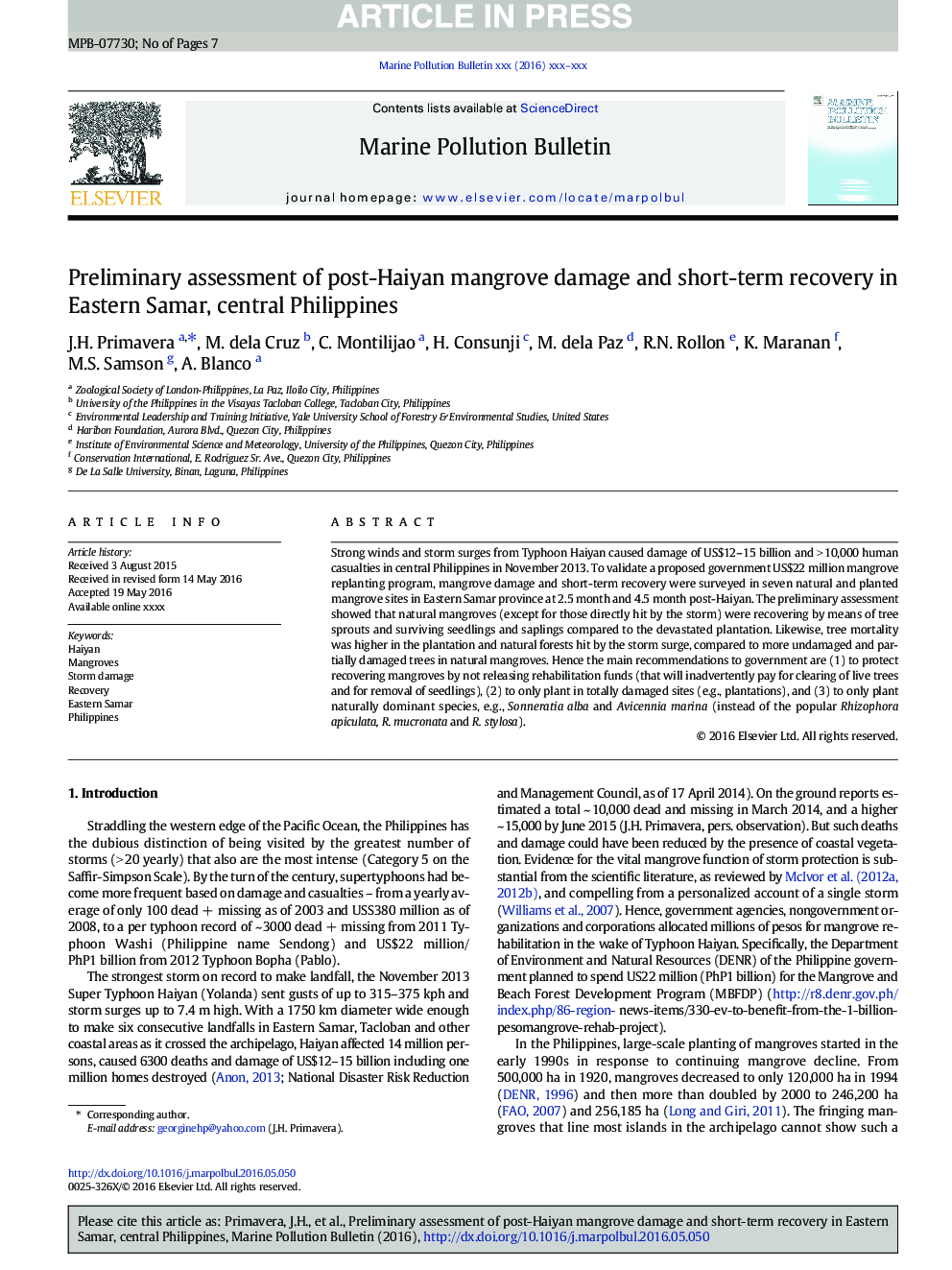| Article ID | Journal | Published Year | Pages | File Type |
|---|---|---|---|---|
| 6355616 | Marine Pollution Bulletin | 2016 | 7 Pages |
Abstract
Strong winds and storm surges from Typhoon Haiyan caused damage of US$12-15Â billion and >Â 10,000 human casualties in central Philippines in November 2013. To validate a proposed government US$22Â million mangrove replanting program, mangrove damage and short-term recovery were surveyed in seven natural and planted mangrove sites in Eastern Samar province at 2.5Â month and 4.5Â month post-Haiyan. The preliminary assessment showed that natural mangroves (except for those directly hit by the storm) were recovering by means of tree sprouts and surviving seedlings and saplings compared to the devastated plantation. Likewise, tree mortality was higher in the plantation and natural forests hit by the storm surge, compared to more undamaged and partially damaged trees in natural mangroves. Hence the main recommendations to government are (1) to protect recovering mangroves by not releasing rehabilitation funds (that will inadvertently pay for clearing of live trees and for removal of seedlings), (2) to only plant in totally damaged sites (e.g., plantations), and (3) to only plant naturally dominant species, e.g., Sonneratia alba and Avicennia marina (instead of the popular Rhizophora apiculata, R. mucronata and R. stylosa).
Related Topics
Physical Sciences and Engineering
Earth and Planetary Sciences
Oceanography
Authors
J.H. Primavera, M. dela Cruz, C. Montilijao, H. Consunji, M. dela Paz, R.N. Rollon, K. Maranan, M.S. Samson, A. Blanco,
